Evolution in action: from genetic change to new species Understand article
How do new species – or completely new types of organism – emerge? Time and separation are the key factors.
When most people think of evolution, they think of Charles Darwin’s idea of natural selection, where one kind of organism evolves into a very different kind – such as fish into terrestrial animals, or early primates into humans – over long periods of time. For scientists, however, evolution means something more subtle: a change in the frequency of genetic variants (DNA sequences that vary between individuals) within a population. And – in another contrast with the popular idea of evolution – such changes are driven by many factors, not just natural selection: mutations, migration and pure chance are all mechanisms of evolutionary change.
One issue has become very contentious outside science: what are the processes of evolution that lead to the emergence of new species, and are they any different to those that happen within a species or a population? In this article, we take a look at these questions using insights from both genetics and the fossil record. Genetics alone cannot explain the evolution of now-extinct species, so scientists rely on fossils to provide snapshots of past evolution. In addition, they can compare the DNA from the surviving cousins of extinct species.
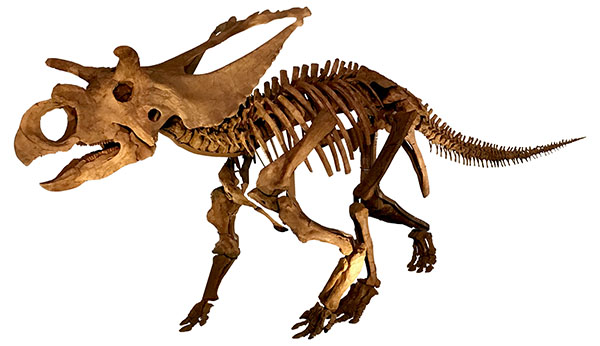
Scientists use both fossil evidence and DNA to track the evolution of extinct species.
Barks/Shutterstock.com
Why do new species emerge?
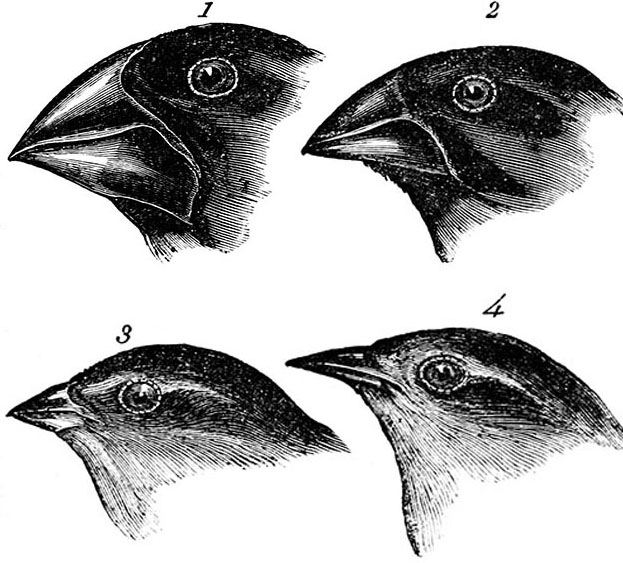
species off inches found in
the Galapagos Islands,
discovered by Charles
Darwin. The beak shapes
evolved to suit the different
food supplies on the various
islands.
John Gould/Wikimedia
Commons
For new species to emerge, there seems to be at least one necessary condition: some degree of separation between populations (groups of individuals) of an existing species. This can be physical separation – a geographical barrier such as a mountain range, or isolation on an island – or it can be ecological, such as having different diets or mating preferences. Over time, the changes in DNA in different populations will eventually make it difficult or impossible for the separated populations to interbreed: they will become different species.
Instances of this phenomenon are abundant. When groups of fruit flies are housed in different enclosures in a laboratory, for example, flies from different groups eventually stop being able to interbreed or produce offspring with each other. The ultimate Darwinian example of speciation (one species splitting into several) is the finches of the Galapagos Islands, described by Darwin in The Voyage of the Beagle. In that case, separation by both diet and island location led to different species emerging, with a variety of beak shapes reflecting adaptations to their individual diets. We now know that this anatomical variety is mirrored at the genetic level by changes in the genes responsible for beak shape. But what types of genetic changes ultimately lead to a species split, as for Darwin’s finches? Current research in the field is shedding light on this question, allowing scientists to follow the genetic changes happening along the way.
The hybrid zone
During the last ice age, many animal populations in Europe became geographically separated when they took refuge in different warmer regions (such as modern-day Spain and the Balkan peninsula). When ice-age glaciers melted around 10 000 years ago, populations of species that had been separated for a long time came into contact again, as they were able to move out of their refuges and repopulate the continent. But spending many thousands of years apart meant that the different populations acquired some genetic variants peculiar to each, which made it harder for the populations to interbreed when they came back together.
For example, when European crow (Corvus corone) populations became separated during the ice age, two visibly different types evolved: the all-black carrion crow (Corvus corone corone) in the west, and the black-grey hooded crow (Corvus corone cornix) in the east. Today, in the ‘hybrid zone’ – a narrow strip of land stretching from Scandinavia to Italy, where crows of both types occur – the two species can interbreed and produce offspring, although with lower success than within their own populations. By analysing the genomes of crows in the hybrid zone, and comparing them to the genomes of crows deep within their own regions, scientists have been able to identify DNA sequences that do not travel across the hybrid zone easily. These fragments of a genome that are specific to one population (here, either hooded or carrion crows), and are very rarely found in the other population, are the key to the emergence of new species. In this case, genes responsible for the differences in plumage are least likely to cross the hybrid zone. This strongly suggests that carrion crows prefer to mate only with other crows that look like carrion crows and not like hooded crows, and vice versa. If this process continues, the two groups are likely to become completely separate species eventually.
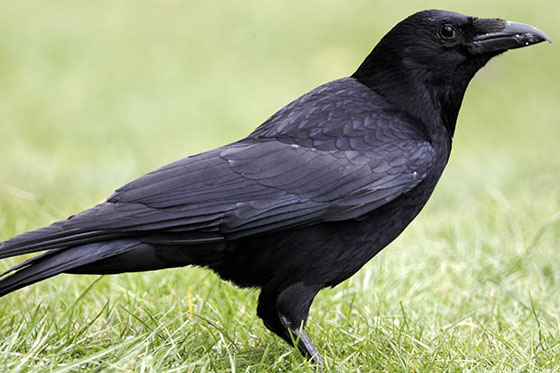
Erni/Shutterstock.com
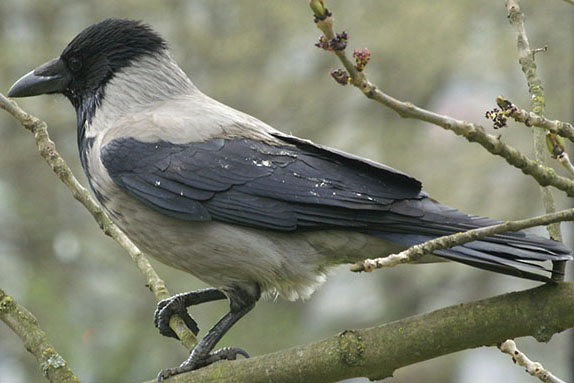
Stefan Berndtsson/Flickr
The molecular and demographic processes taking place in crows (or in Darwin’s finches), which scientists have been observing and studying for decades, highlight the universal nature of evolutionary processes. Fundamentally, these processes are no different from those occurring in microorganisms – such as when the Ebola virus evolved into a more infectious strain (see Bryk, 2017). The main factor that separates these examples is time: the degree of genetic change that took place in Ebola over a couple of years took thousands of years in birds, reflecting their much longer generation time. In each case, however, when the organism adapts to new environments or random genetic changes occur, the result is that different populations become more and more distinct. In the case of crows or finches, this ultimately leads to complete reproductive isolation – and thus to a new species.
From dinosaurs to birds – and back
But what about the emergence of seemingly completely new types of organism – such as the evolution of whales from their terrestrial ancestors, or of birds from their dinosaur ancestors? How can we track and understand such major changes in life on Earth, changes that are much greater than the emergence of individual species?
The main challenge in tracking such evolution is that it takes place over an extremely long timescale, so most ancestor organisms are extinct. However, fossils last for hundreds of millions of years and provide detailed information on anatomical changes over these huge swaths of time. In recent decades, thousands of well-preserved fossil specimens have been discovered in northeastern China and have illuminated in great detail the evolution of birds from dinosaurs. For example, we now know that dinosaurs had feathers a long time before there were any birds able to fly, suggesting that the initial use of feathers was not for flight. Insulation, camouflage and display are all possible alternative advantages that feathers bestowed on these early feathered reptiles (Foth et al., 2014; Zhou, 2014).
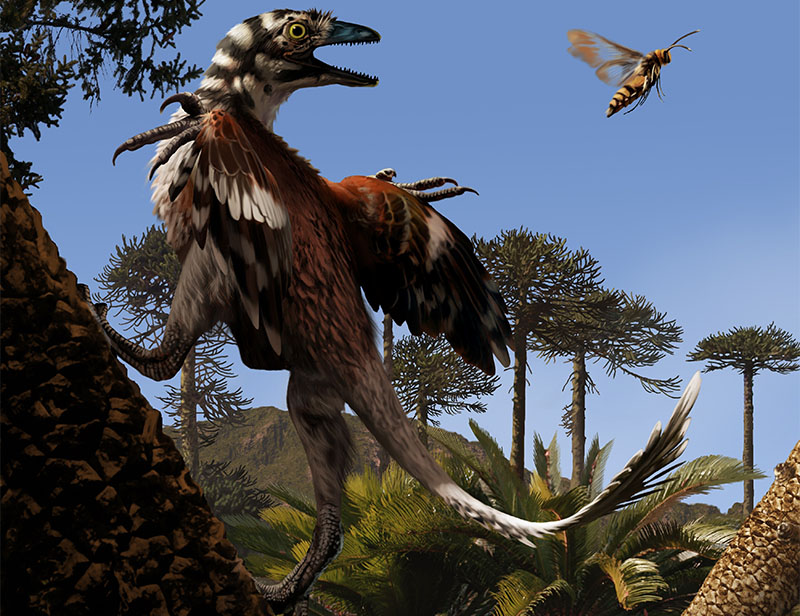
Jaime Chirinos/Science Photo Library
Similarly, flying birds did not emerge suddenly and fully formed. Tracking the different aspects of anatomy needed for wing-powered flight – small size, wings, feathers, fused tail, wishbone and many others – has shown that the complete bird body plan emerged gradually over 100 million years. Once this body plan was complete, birds underwent a massive and rapid divergence into a huge variety of different forms, resulting in the almost 10 000 species we know today (Brusatte, 2015).
The evolution of birds from dinosaurs, then, was a continuous process, without sudden changes. It has been said that if a time-travelling palaeontologist could sit back and watch the evolution of birds over 100 million years, she would not notice any special moment or event when she could definitely say where the dinosaurs stopped and the birds began. Thanks in large part to the fossil discoveries in China, the previous two decades have seen a shift in our understanding of the evolution of birds, such that birds are now firmly placed within the dinosaurs, making a chicken a distant cousin of a Tyrannosaurus rex. Not only that, but T. rex is now seen as more closely related to chickens than to many dinosaur species – for example, Triceratops.
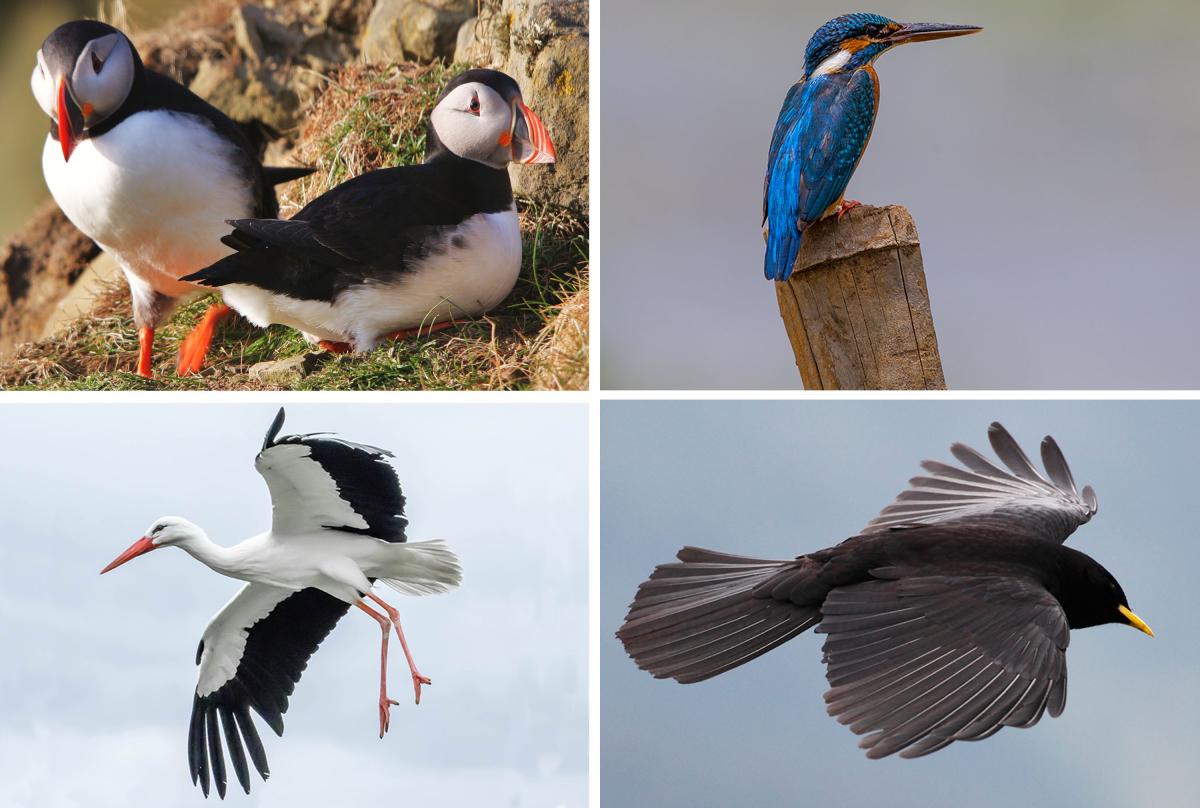
(Fratercula arctica); top right: kingfisher (Alcedo atthis); bottom left: white stork (Ciconia ciconia);
bottom right: Alpine chough (Pyrrhocorax graculus)
Ronnie Robertson/Flickr (CC BY-SA 2.0), Shahin Olakara/Flickr, Barry Badcock/Flickr, Ed Dunens/Flickr
Just evolution
Such evolutionary changes above the species level are sometimes called ‘macroevolution’, in contrast to the genetic changes that we can observe within a species (sometimes called ‘microevolution’). Unfortunately, this dichotomy suggests that there are two different types of evolution, or that evolution is driven by different mechanisms on the ‘micro’ and ‘macro’ levels. This distinction is often exploited by those who do not accept evolution, and who claim that only ‘microevolution’ ever occurs. But the dichotomy is false, because there are no mechanisms other than those that change the proportion of genetic variants in a population. There is just evolution, driven by mutation, migration, selection and chance.
Author dedication
This is the last in a series of three articles that I would like to dedicate to Dr Dean Madden (1960–2017), who, in late 2016, prompted me to write about evolution for Science in School. Dean was a friend, mentor, colleague, teacher, designer, typographer, beekeeper, cider maker, chilli grower, skinhead reggae lover, grammar policeman, Apple user, Whovian, all-around brilliant mad scientist and partner in mischief. Goodbye, and thanks for all the fish.
Editor’s note: Dr Dean Madden was an enthusiastic supporter of Science in School from its conception, and a member of the editorial board from 2005 until his death in 2017.
References
- Bryk J (2017) Evolution in action: pathogens. Science in School 42: 8-13.
- Brusatte SL (2015) The origin and diversification of birds. Current Biology 25(19): R888–R898. doi: 10.1016/j.cub.2015.08.003
- Foth C, Tischlinger H, Rauhut O (2014) New specimen of Archaeopteryx provides insights into the evolution of pennaceous feathers. Nature 511: 79–82. doi: 10.1038/nature13467
- Zhou Z (2014) Dinosaur evolution: feathers up for selection. Current Biology 24(16): R751–R753. doi: 10.1016/j.cub.2014.07.017
Resources
- Find out seven important things about evolution from paleoanthropologist/geneticist John Hawks.
- Read a modern classic book on evolution and speciation. See:
- Coyne J A (2010) Why Evolution is True. Oxford, UK: Oxford University Press. ISBN: 0199230854
- Find out more about the emergence of species from Jerry Coyne’s blog.
- Read an article about new research on Archaeopteryx on the website of the European Synchrotron Radiation Facility.
Review
The article is interesting and explains evolution in simple words, without difficult or confusing details. Every phenomenon or question mentioned includes clear examples, leaving the reader with the wish to read much more about this dynamic process of evolution. Through this article students can be encouraged to think about evolution as an important principle in the vast domain of biology, and to understand that evolution is achieved through specific mechanisms, acting over longer or shorter timescales, depending on the life cycle of different organisms.
Some comprehension questions that students could be asked include:
- How do new species arise?
- How is dinosaur evolution connected to the evolution of birds?
- Is evolution in time a slow phenomenon?
- What is a hybrid zone?
- Is evolution connected to diet?
- What does environmental adaptation mean?
Alina Giantsiou-Kyriakou, biology teacher, Lyvadia High School, Cyprus





